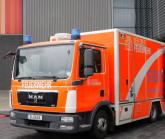The TPA ambulance, armed with its own CT scanner, has arrived in the United States after several successful years in Germany.
Now what?
Like all new advances, it’s a difficult balance between costs and benefits. The money, in the end, is what it really comes down to. Will the cost of a CT ambulance, the equipment needed to send images to a radiologist, the extra training for EMTs, the price of stocking TPA on board, and maybe even having a neurologist on the ride (or telemedicine for one to see the patient) be offset by money saved on rehabilitation costs, better recoveries, fewer complications, even returning a patient to work?
I have no idea. I’m not sure anyone else does, either.
Certainly, I support the idea of improved stroke care. Although far from ideal, TPA is the only thing we have right now, and the sooner it’s given, the better. Most neurologists will agree. But who’s going to pay for this?
The insurance companies, obviously. But money is finite. What if we upgrade all these ambulances, only to find that there’s no significant cost savings on rehab and recovery when TPA is used in the field? Then the money comes out of doctors’ and nurses’ salaries, higher premiums for everyone, and a cutback in treatment for some other disorder. I’m pretty sure it won’t be taken out of an insurance executive’s year-end bonus.
And just try explaining that to the family of a stroke victim.
It’s not practical to put a CT scanner in every ambulance, so where do we put those so equipped? Again, there’s no easy answer. In areas with large retirement communities? Seems like a safe bet, but young people have strokes, too. Only in cities? More people live in cities, but those in rural areas may be too far from a hospital to receive TPA early. Shouldn’t they have one, too?
Who’s going to make the decision to send the TPA ambulance vs. the regular ambulance? That’s another tough question. The layman who calls in usually isn’t sure what’s going on, only that an ambulance is needed. The dispatcher often can’t tell over the phone if the patient has had a stroke, seizure, or psychogenic event. Should a neurologist or emergency medicine physician make the decision? Maybe, but how much extra time will it take to get one on the line? And, even then, they’ll be making a critical decision with sparse, secondhand information. What if the special ambulance is mistakenly sent to deal with a conversion disorder, only to have a legitimate stroke occur elsewhere when it’s no longer immediately available? That, inevitably, will lead to a lawsuit because the wrong ambulance was sent.
I’m not against the stroke ambulance – far from it – but there are still a lot questions to be answered. Putting a CT scanner and TPA in an ambulance is, comparatively, the easiest part.
Dr. Block has a solo neurology practice in Scottsdale, Ariz.
